Mobile Retargeting is a specific advertising method aimed at those who once showed interest in your site or mobile app. It is a smart performance marketing tool that gives you an opportunity to return your potential clients and also increase your brand awareness.
We can definitely say that the clients do not always leave because your offer is bad or they don’t need your product. There are hundreds of reasons why people visit the site or app and then leave it. They could accidentally close it, get distracted, etc - you can never know. Therefore, you need to try a chance and return those people, realizing that some of the clients may leave by mistake.
With all this, one can be sure that retargeting is a “must-have” function for brands that attract customers on the Internet. And this is especially true for those who have already pretty much dried up their main advertising channels.
Let us now narrow it down to mobile advertising, because here we have a number of specific factors which make the usage of mobile retargeting even more important than desktop retargeting campaigns.
If we look at the statistics, it is reported that over 20% of users do not return to the application after the first use. This can be illustrated by the fact that, in general, people usually tend to stick to a smaller number of applications and use them more often rather than constantly trying something new.
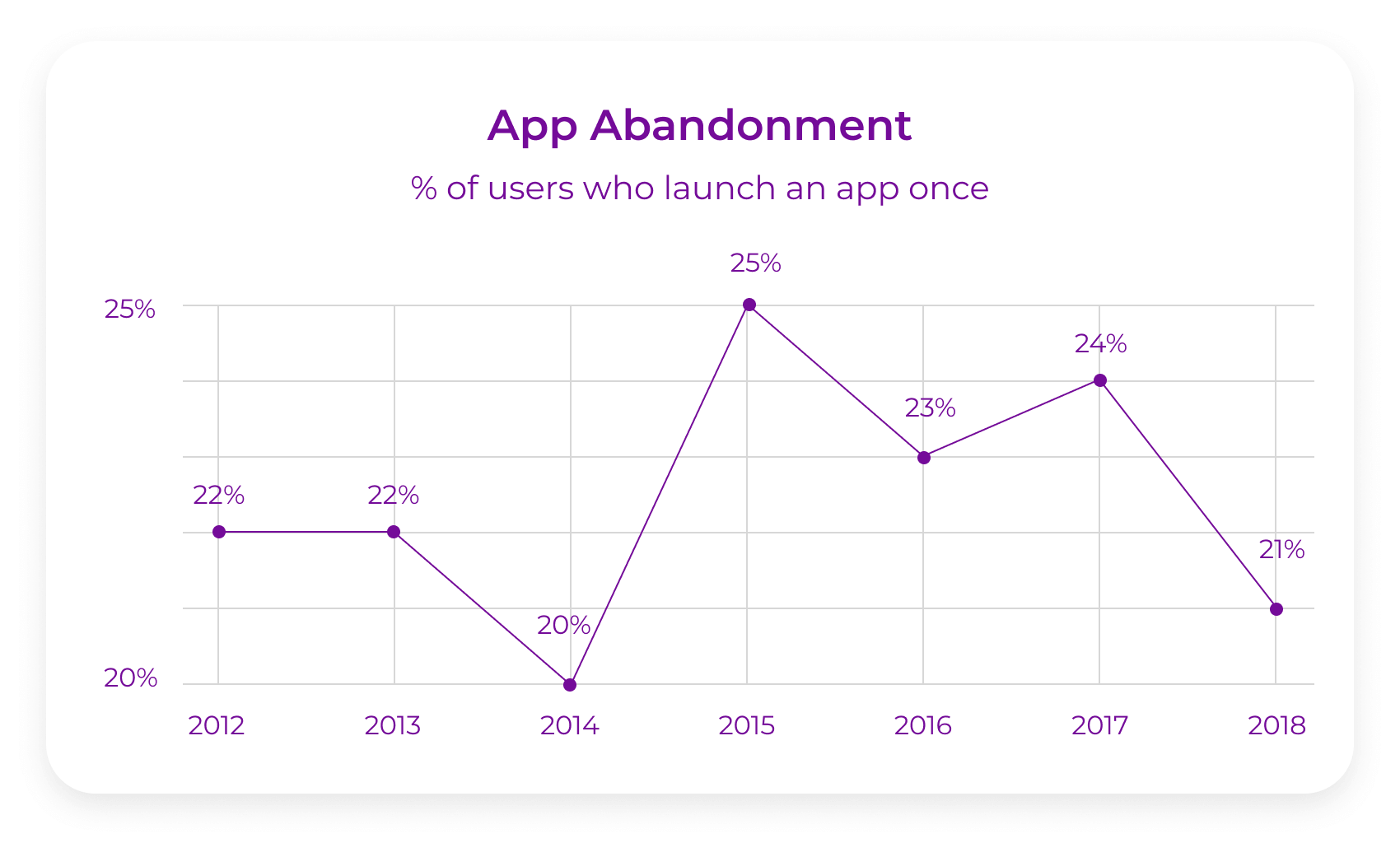
In addition, the market is oversaturated with devices. In developing countries, almost every person already has a smartphone. Because of this, working with users is much more efficient and profitable in the mobile environment, which is the exact purpose of mobile apps retargeting.
How does mobile retargeting work
Mobile retargeting is based on "deep links" technology. Usually, a deep link is a link which immediately opens a mobile application when clicked on by the user. It can lead to either the main screen of the application or any other specific screen inside the application.
Mobile app retargeting allows you to implement the following scenario: the user surfs on the Internet, clicks on the link that interests him or her and then gets right away to the chosen window in the app. A direct link from your browser to the mobile app!
In order for app retargeting to work, the application must have a URL scheme configured properly for specific links. For instance, the Instagram profile link opens the profile screen in the Instagram application. Another example is sales or benefits for app users – once they click on the link, they should get to the right page of the application, not just the main page which may be confusing. At the same time, if the user doesn’t have an app installed on their phone yet, they should be redirected to App Store or Play Store and then get to the right page after the installation. Although these details should be carefully managed, deep links can provide a great user experience if used correctly.
Best practices for mobile app retargeting
The idea of retargeting mobile advertising is not new - it has been used by many brands for quite some time already and throughout this time a number of best and worst practices for mobile retargeting have been defined. Here are some steps to follow in order to achieve the best results and make your campaign successful:
Define your goals
This first step is usually the most important one. The more precise your vision of the app retargeting campaign is, the more specific steps you’ll be taking further on, which is a key to achieving the best results. So take some time and think about what the main goals of your app retargeting campaign are.
Do you want to raise brand awareness? Well, in this case, you should focus on emphasizing your brand, get the people to know about it, spark their interest to visit your app or website and keep it fresh in their minds.
If your primary goal is to get conversions, in contrast, your main audience is people who already know about your services. This requires a different strategy, so your campaign can get more targeted. At this stage you might want to include links to specific services, suggest a free trial or highlight the products a person was interested in.
Those details are important, so setting up your goals is a key element of defining your approach to mobile retargeting.
Know your audience and personalize
Another important thing about mobile app retargeting is getting to know your audience. Personalized offers served at the right time and on the right platform work much better than general ads.
It is crucial to understand your customers – get to know which platforms they use, what they are looking for, how do they use your app, etc. - all this information provides a great opportunity to offer personalized promotions. After you gather this data, you can lead people to specific links within your app and use a cross-channel approach to remind them about your products.
This practice has been widely used over the past few years and it already showed great results. For example, a recent study revealed that targeted campaigns get 18% advantage in retention compared to their broader counterparts.
These numbers prove that personalization is a great way to establish a solid relationship with your customers as it ensures that your app won’t be abandoned. So don’t miss this opportunity and make most out of your app retargeting campaign – personalize.
Use audience segmentation
Once you know your goals and your customers, it is now time to segment the audience and build retargeting scenarios for each group.
Mobile retargeting is suitable for almost any service where you can make a purchase: travel, food, transport, e-commerce, games, lifestyle, dating, and many others. There are many scenarios and approaches for returning users to the mobile application and many ways to segment users.
Here are some examples of specific audience segments grouped by behavior:
• people who looked for goods, but did not add anything to the basket;
• people who added goods to the basket, but did not make a purchase;
• those who recently bought something and your goal here is to sell more;
• those who bought something earlier, but then lost interest.
Now let's have a look at the most popular user return scenarios:
• providing a special offer, such as a discount on the next order or bundles of goods;
• introducing new features in the application and informing of new ways to use the application.
• showing banners with products that the user already searched for or complementing products.
• reminding of forgotten goods in the basket and many others.
Users can also be segmented by time windows, such as how often do you want them to see the ad or how much time passed since their last visit. It can depend on the type of product – those who shop for travel should be targeted sooner than those who are interested in luxury goods, for example. Furthermore, it is also essential to re-engage new users after they install an app as they tend to return more after this type of app retargeting. Finally, location and time zone are also significant details to consider in order to provide retargeting ads at the right time.
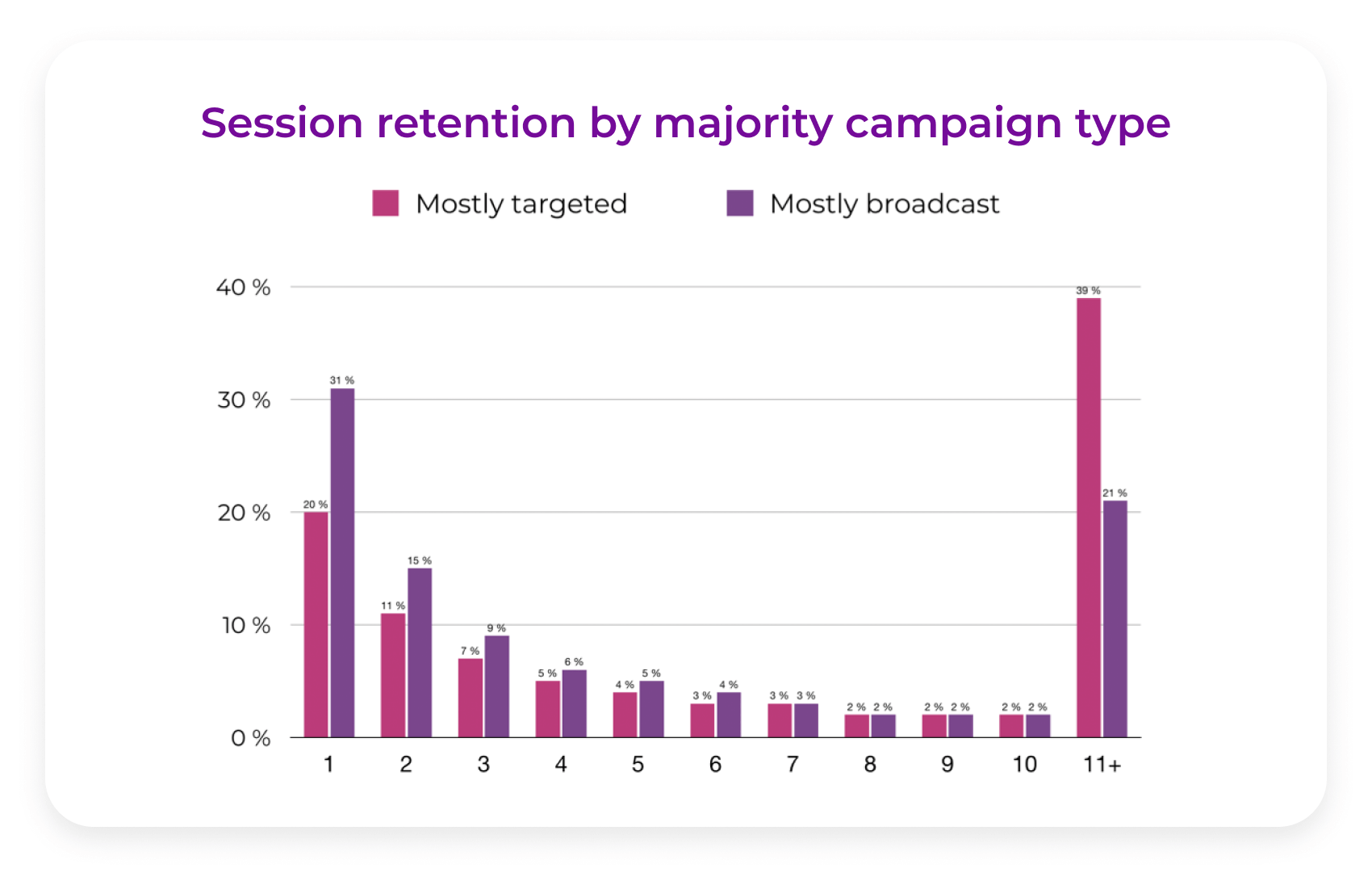
The success of any retargeting campaign lies in the correct segmentation of the audience, which largely depends on the topic and type of business. Therefore, before starting a campaign, select segments of your audience and work out the main return scenarios.
Use a frequency cap and a burn code
Let us not forget about impressions frequency. You might want to remind your users about your product over and over. The idea is tempting but too many ads can be annoying for users which may push your potential customers away. According to Emarketer, more than 77% of US digital buyers report that they see too many ads from the same retailers. At the same time, staying quiet for too long can result in a situation when people forget about your brand. Therefore, it is necessary to make sure your ads are delivered neither too often nor too rare.
It can be even more annoying for users to get ads about something they have already purchased. In order to avoid that you might want to consider using burn code which will remove customers from retargeting lists once they have bought something or shift them to another list with a new mobile retargeting campaign.
Measure results carefully
When talking about the success of the campaign, it is essential to have numbers in order to compare which creatives are the most effective. To get those numbers one should consistently measure retention, installs, and revenue. Other values that might be of particular interest for app retargeting are re-attributions (number people who re-installed the app) and re-engagement (number of people who have used an app after the campaign ended). These metrics can help you estimate which campaigns performed better and maximize return.
Choose the best retargeting service provider
Last, but not least: choosing the right retargeting service provider is as important as launching a campaign itself. With SmartyAds you can easily set up your mobile retargeting campaign and drive retention and engagement rates.
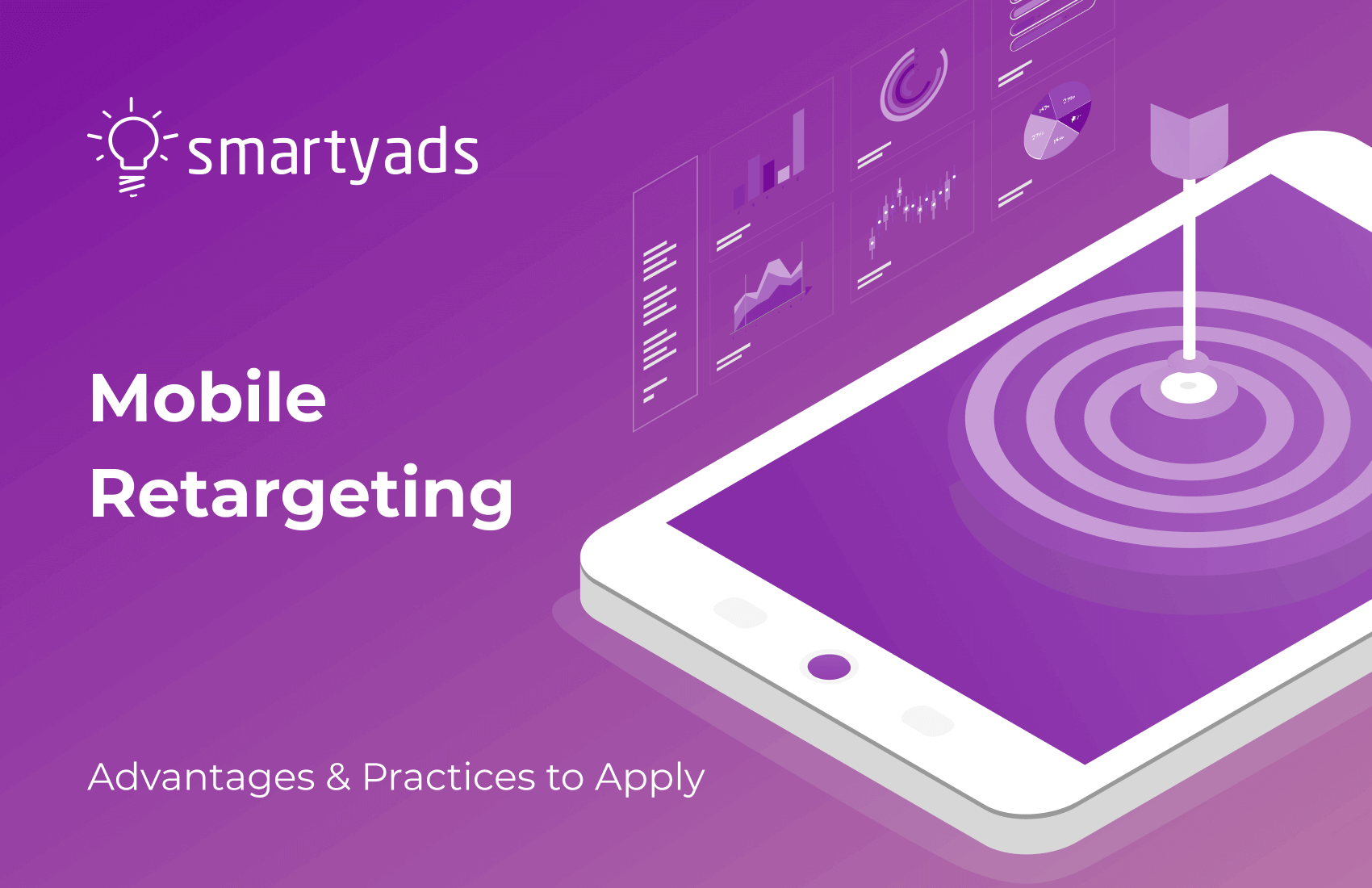
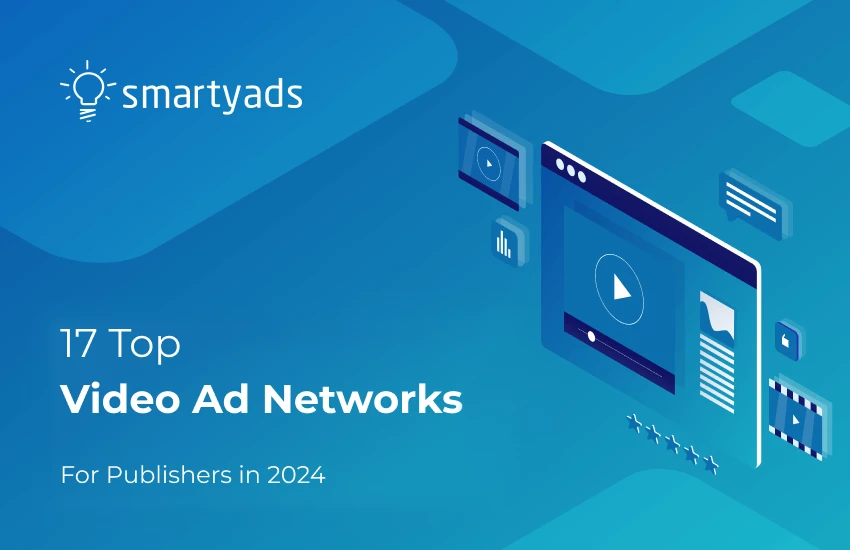
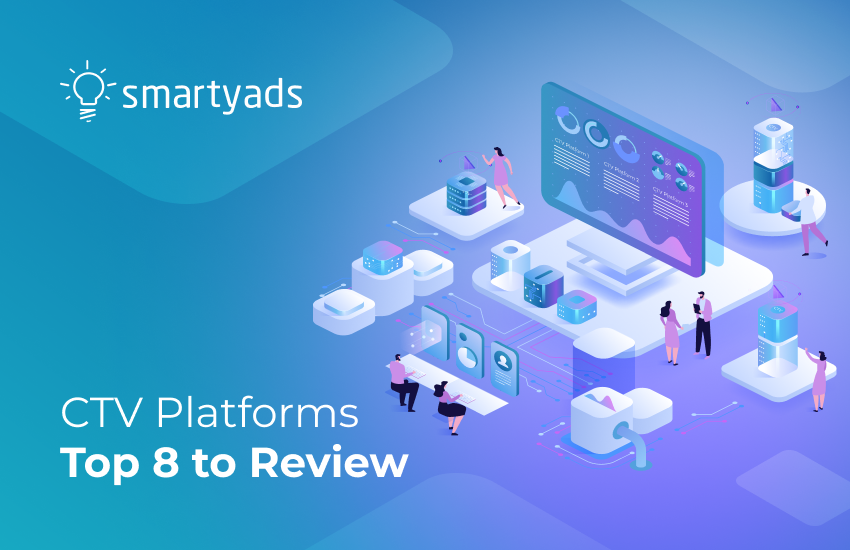
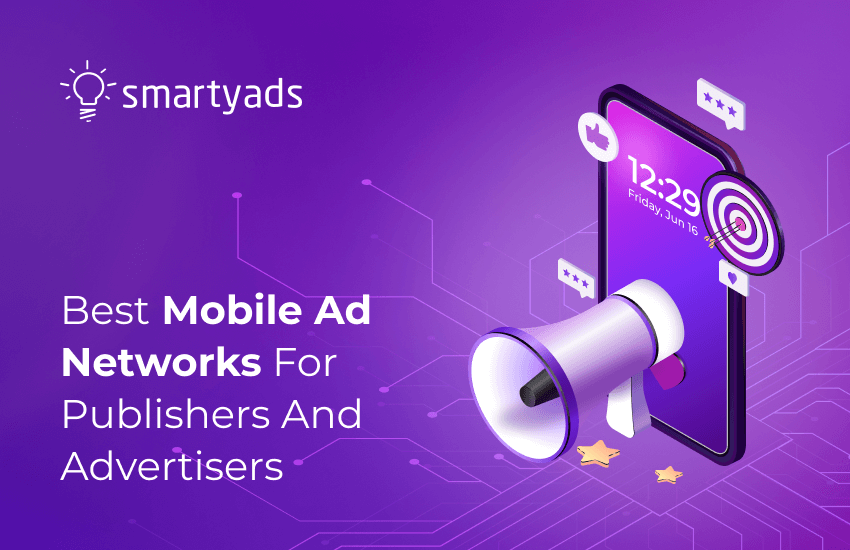
![12 Best eСommerce Advertising Platforms in 2023 [Ranked & Reviewed]](images/ecommerce-ad-platforms.png)